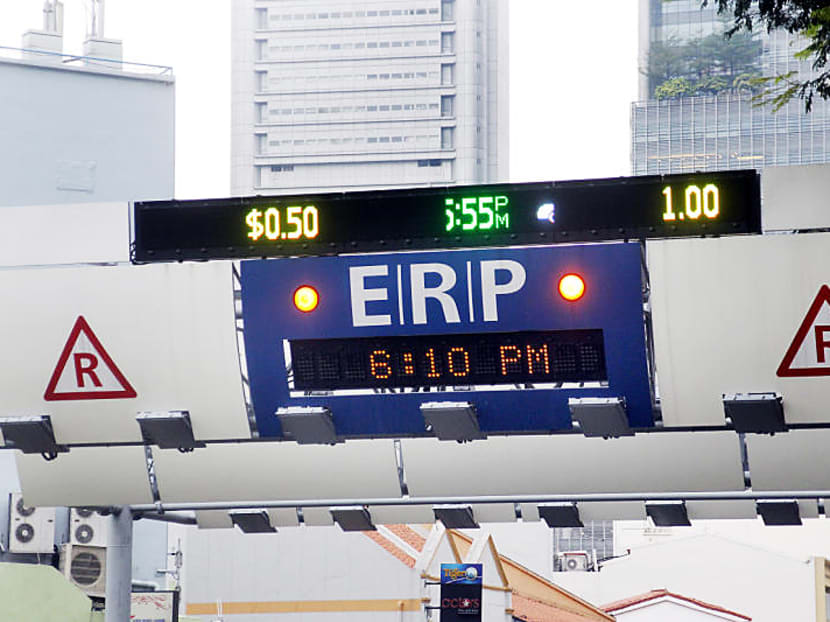LTA calls for tender to develop satellite-based ERP system
SINGAPORE — A new Electronic Road Pricing (ERP) system using satellite positioning technology will be put in place by 2020 and could herald a sea change in how motorists are taxed for congestion. Motorists could pay for the distance they travel on congested roads, rather than pay a flat fee once they enter an ERP zone, as with the existing system.
SINGAPORE — A new Electronic Road Pricing (ERP) system using satellite positioning technology will be put in place by 2020 and could herald a sea change in how motorists are taxed for congestion. Motorists could pay for the distance they travel on congested roads, rather than pay a flat fee once they enter an ERP zone, as with the existing system.
A wide variety of changes could also be thrown up when Singapore deploys the new system based on Global Navigation Satellite System (GNSS) technology, which uses satellites to pinpoint a user’s geographic location. These range from replacing parking coupons to paying for tolls at checkpoints, and allowing motorists to get real-time traffic information on an interactive computer installed in vehicles, in place of the existing in-vehicle unit.
Announcing yesterday that it has called a tender in which three companies have been shortlisted to develop this second-generation ERP system, the Land Transport Authority (LTA) said: “A key advantage of a GNSS-based system is the ability to implement distance-based pricing along the congested roads where road pricing is to be implemented. Distance-based pricing, as opposed to the current gantry-based system, is more equitable, as motorists will be charged proportionate to the distance travelled on these congested roads.”
The decision to build the new ERP system, said the LTA, comes after an 18-month system evaluation test in Woodlands Avenue 12 that concluded in December 2012 showed it is a technologically feasible idea.
The LTA also noted the constraints of the current ERP system, such as the cost of installing the gantries, which take up land space, and that it would become increasingly expensive and difficult to maintain, given that the existing system is almost two decades old.
“With the GNSS-based system, motorists can also look forward to an interactive and intelligent on-board unit in their vehicles that can support a range of value-added services. These include real-time traffic information tailored to their location, as well as electronic payment for parking fees without today’s paper coupons,” the LTA said in its press release.
“Off-peak car users can look forward to new policies that we are considering, which may allow them to pay only for using their vehicles for short periods rather than the whole day or for using them only on uncongested roads.”
In response to TODAY’s queries, an LTA spokesman said the on-board unit could also be used to purchase e-Day licences for Off-Peak Cars and pay for checkpoint tolls.
A range of payment options will be available, from upfront payment through Contactless e-Purse Application (CEPAS)-compliant stored value cards to backend payment using credit and debit cards, a virtual payment account and GIRO, the spokesman added.
Asked about concerns over privacy, the LTA spokesman said it had factored this into the design of the new system.
“We want to reassure all road users that the necessary safeguards will be incorporated, so only data necessary to perform relevant functions will be collected,” he added.
Dr Alexander Erath of the Future Cities Laboratory at the Singapore-ETH Centre for Global Environmental Sustainability said the Government must have a “strict data policy”, which defines the purpose of the data clearly and ensures it is not used for anything else.
Just as Singapore blazed the way in setting up the current ERP system in 1998, no other country is currently deploying a GNSS-based system nationwide — GPS-tracking systems are implemented on a smaller scale, such as by large logistics companies to track their trucks. Germany introduced a GNSS-based road-pricing system in 2005, but it is limited to truck tolls.
Critics of the current ERP system have said it has not been entirely efficient in controlling congestion on priced roads.
Commenting on the possibility that motorists could pay only for the stretch of taxed roads they use under the new system, transport analysts told TODAY it could be a more efficient way to ease congestion as drivers are more likely to change their travel patterns.
Nanyang Technological University transport economist Walter Theseira said the system should ideally be able to learn a motorist’s regular route and calculate how much he could expect to pay that day. It should also suggest alternative routes with different prices and journey times, he added.
Dr Park Byung Joon, head of programme for Urban Transport Management at SIM University, said motorists could pay ERP charges at the end of a month, after the distance clocked has been compiled.
The three consortia shortlisted to participate in the tender are NCS & MHI Engine System Asia, ST Electronics (Info-Comm Systems) and Watchdata Technologies & Beijing Watchdata System. The contract is expected to be awarded in the second half of next year and implemented around 2020.







